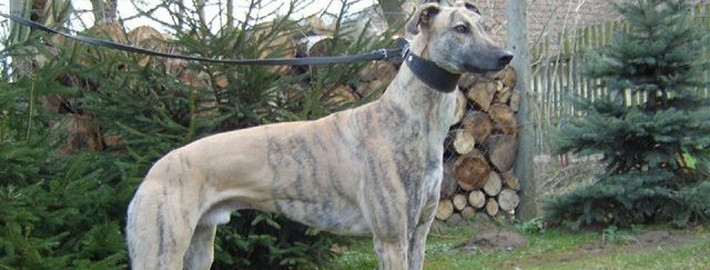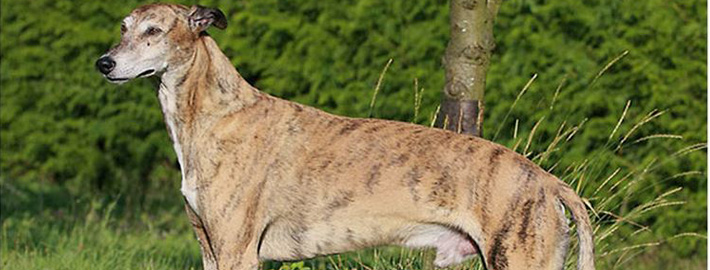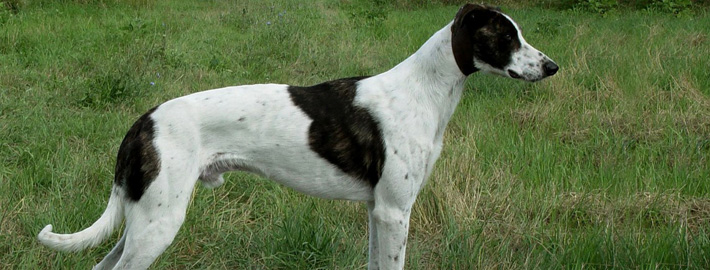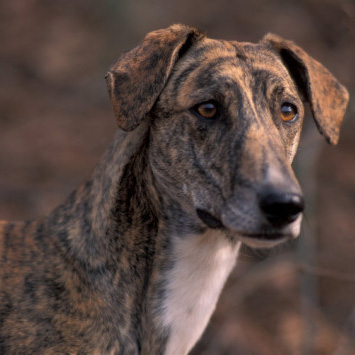What makes the Hungarian Greyhound Unique?
The Hungarian Greyhound is a dog breed. It is a type of sighthound originating in Hungary and Transylvania. It is used for hunting and coursing, and is also kept as a companion.
Breed Groups
Page Contents
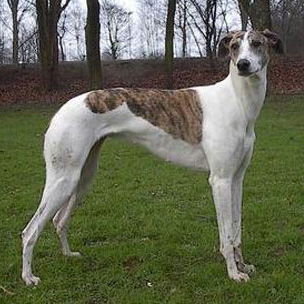
SnapShot
| Size: | Males – 67 to 70 cm (25.5 to 27.5 inches) Females – 61 to 66 cm (24 to 26 inches) |
| Weight: | Males – 24 to 31 kg (53 to 68 pounds) Females – 22 to 29 kg (49 to 64 pounds) |
| Origin: | Hungary; Transylvania (now part of Romania) |
| Life Span: | 12 – 14 Years |
| Colour: | Black & White, Brown & White, Merle / Spotted / Brindle / Speckled, White / Cream |
| Litter Size: | 6 to 8 puppies |
Is the Hungarian Greyhound Right For You?
The Magyar agár is a sighthound of elegant yet rugged stature. This breed is affectionate and docile. They are unlikely to bite or be snippy with people, although they have a much stronger guarding instinct than some other sighthound breeds. They are usually well behaved around children and also with other dogs. They are somewhat reserved but should not be overly shy. They are intelligent, easy to train and faithful. As with all dogs, early socialization is a must.
In 5 Words
- Affectionate
- Docile
- Devoted
- Intelligent
- Faithful
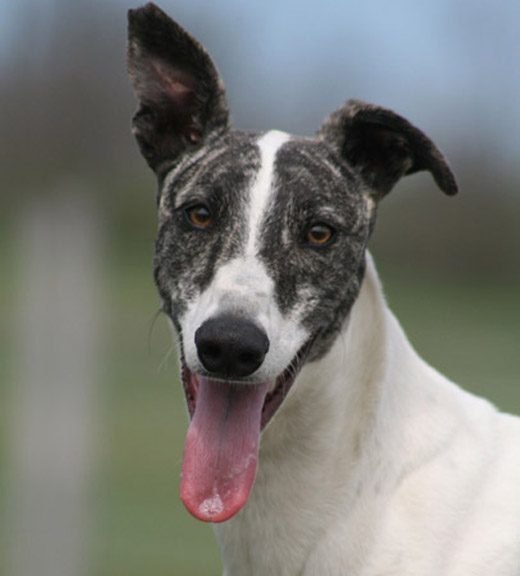
Characteristics
Learn About the Hungarian Greyhound
Description
General Description
The Magyar agar is a dog breed that is also called MA or Hungarian Greyhound. The MA, although called a greyhound, is not a descendant of the Greyhound breed and is not even known as a Greyhound in its country of origin that is Hungary and Transylvania. The proper alternative name should be Hungarian gazehound or Hungarian sighthound. The dog was bred for hunting and coursing but is more often kept as a companion. These dogs can live in the city but should be provided with sufficient opportunities to exercise by running, walking or jogging. As with any other sighthounds, the dog should be kept away from cattle. The dog does not like the cold although their coat can adapt to the cool weather when necessary.
Size
They weigh between 49 pounds (22 kg) and 68 pounds (31 kg) with a height between 25 inches (64 cm) and 27 inches (69 cm) at the shoulders.
Coat
The Magyars have much thicker skin with a short, smooth and dense coat. The coat becomes slightly longer during the colder seasons. This special coat trait of this dog makes them very hardy dogs that can tolerate cool temperatures better than some of the other short-coated sighthound breeds.
Short History of the Hungarian Greyhound
The Hungarian Greyhound is believed to have originated more than thousand years ago. The first archaeological findings of the dog’s fossilized remains indicate that it accompanied the Hungarians in the Carpathian Mountain Range as early as in the I A.D. There is a speculation that the breed has already been a widespread home pet when this nomadic folk inhabited the Ural Mountain Range of Eurasia. Unfortunately there is no factual evidence as to what breeds participated in creation of the Hungarian Greyhound but its fanciers strongly suggest that various Scent Hounds were used in the invention of this dog.
In its native country the Hungarian Greyhound is called the Magyar Agar. The first word stands for Hungarian name for Hungary and for nomadic Eurasian indigenous people that founded their settlements in the Danube River in 896 A.D. The word «agar» is translated as «gaze hound» or «wind hound». The owning of the Hungarian Greyhound was not a privilege of the Hungarian aristocracy and every landed peasant had a right to keep one or several of these dogs. The breed was much favoured by hunters for its speed capability and impressive stamina. Its main preys were hare and deer. The dog was supposed to escort hunters on the horsebacks for distance of nearly 30 kilometres and up to a maximum of 50 kilometres in a single day. Its major responsibility was to dispatch the game that was put down by hunters.
The Hungarian Greyhound can rarely be seen elsewhere except for its homeland. Its superb hunting qualities including sharp sight and good nose earned some following in the western countries. Moreover its speed ability and great endurance make it an exceptional candidate for dog’s racing. The breed’s fanciers also strive to promote the Magyar Agar among public since its gentle and reserved temperament makes it a wonderful companion dog. It was granted recognition of the United Kennel Club (UKC) in 2006.
Temperament
This breed is affectionate and docile. They are unlikely to bite or be snippy with people, although they have a much stronger guarding instinct than some other sighthound breeds. They are usually well behaved around children and also with other dogs. They are somewhat reserved but should not be overly shy. They are intelligent, easy to train and faithful. As with all dogs, early socialization is a must.
Magyar agárs are very adaptable and can live comfortably in apartments as well as outdoor kennels as long as they are provided with adequate exercise and human interaction. If kept inside, they are very easy to housebreak and make wonderful house pets. During the day they will spend a good portion of their time sleeping, but they are by no means “couch potatoes” and do require daily exercise to stay fit and happy. Long walks, free running and trotting next to a bicycle are the best ways to exercise Magyars since they are not usually too keen on ball-chasing as are other breeds.
Although they can live peacefully with cats and other small animals inside the home, it is important to remember their coursing heritage. They are an excellent coursing dog, and are still employed for such purposes in Hungary. As such, they will tend to want to chase down anything that resembles prey. However, with proper introduction and supervision, they can coexist very well with cats and small dogs.
Caring for Your Hungarian Greyhound
General Health
Given proper nutrition and care, sufficient exercise and regular visits to the vet, these dogs can live up to 12-15 years on the average.
The most common problems for the breed include:
• epilepsy;
• eyes problems;
• canine hip dysplasia;
• muscle strain;
• hypothyroidism;
• sensitivity to anaesthesia;
• gastric torsion.
Grooming & Bathing
These dogs are fairly easy to groom for their smooth, short coated hair. Bathing should only be done when necessary. A damp cloth can be used to wipe their coat to keep it at its best condition. The breed is known to be generally healthy and free from any genetic diseases.
Exercise & Training
The Hungarian Greyhound is known to be an eager and diligent learner, which is smart enough to grasp almost everything the handler is willing to teach it. However there can be some obedience issues with this dog if it doesn’t recognise the dominative position of the trainer or doesn’t trust him/her. That’s why the handler should assert its leading stance right from the first lesson by treating the dog with proper but not excessive firmness.
The breed is somewhat sensitive to unfair attitude and harshness. Its impressive size implies that the wilful Hungarian Greyhound can be hardly controlled so it’s crucial to use in its training only reward-based methods.

